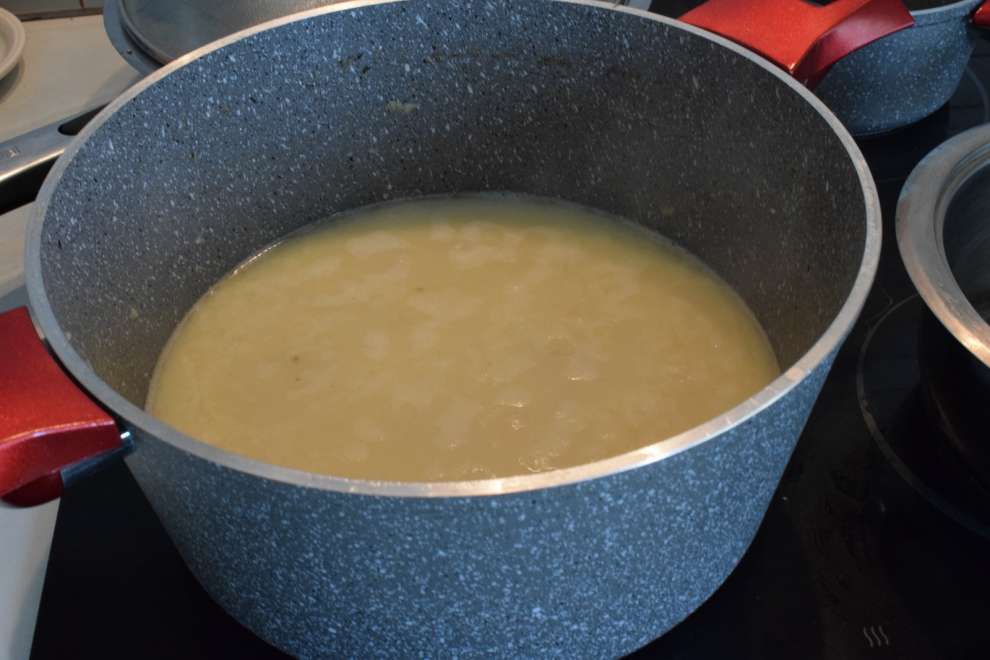How to make Perfect Trahanas Soup
Traditional Cyprus Winter Food
“What’s that?” I asked, pointing to a bag of brown nondescript twirly things at the market shortly after I had emigrated to Cyprus. I have been brought up mainly on Greek cuisine, but these brown twirly things were not in my mother’s repertoire, although I have since learned that they are popular, not just in Cyprus but all over Greece and the Middle East region in general.
Food writer, Diane Kochilas describes how a first century cookbook author called Apicius, mentions a food called Tractae that seems to be a kind of Trahana. Persia is thought to be a likely originator of the product, but Bulgarians, Arabs, Kurds, Turks all incorporate it into their cuisine in some form or other. Scholar, William Weaver says in an essay on the origins of Trachanas “milk based porridges dried in the sun for use during winter are so ancient in concept that they cannot be dated and are probably as old as the gathering in of grains’.”
Trachanas can be made by mixing wheat flour, semolina or bulgar wheat with some form of soured milk (usually from goats or sheep). It is then dried in the sun and broken into pieces. It is usually made by artisans or housewives.
Although Cyprus is not the only country to enjoy it, it is very much anchored into Cypriot traditional cuisine and the Cypriot way of making it is to add halloumi when the soup is being made. In Greece it is feta that is added.
There are varied ways of preparing Trahanas. Some are based on a use of tomatoes. In this article I will show you three lemon-based approaches to making delicious Trahanas soup.
First half fill a large bowl with dried Trahanas. Cover this with water and leave to soak. The water will be absorbed quite quickly. Top up with more water and leave to soak overnight or at least for a few hours. The Trahanas will become quite soggy and will fill the bowl totally.

Pour the Trachanas into a saucepan and add five bowls of water. Bring to the boil and simmer for 40 minutes, stirring frequently. Cut two slices of Halloumi and chop up into little pieces. Add these to the saucepan when it has been simmering for the first ten minutes. In the final 10 mins add a little “φιδέ” or vermicelli (enough to fill a cup used for drinking Greek/Cyprus coffee). In the final five minutes add some avgolemono. This gives a lovely creaminess to the soup. I would use two eggs and two lemons, but preferences here vary. Preferences vary also for the desired degree of thickness of the soup. You might want a little more water or a little less.
Every single Greek in the world-wide diaspora of Greeks knows about avgolemono, but for the non-Greeks, I would mention that it is a mix of whisked egg and lemon to which you slowly add some tablespoons of liquid from whatever you are cooking while whisking continually. You then add back your avolemono to the saucepan of simmering food. Quite a number of Greek dishes are made in this way and it is also taken as a soup with rice or “kritharaki” (orzo pasta) and some chicken bits.
I find Trachanas improves when kept for a day or two in the fridge. This is what was left on the second day. The saucepan was originally much fuller.
I mentioned earlier three possible variations of the lemon-based way of preparing trachanas (as opposed to a tomato-based way). One of the variations is to simply add lemon juice rather than avgolemono. The other is to use chicken broth rather than water as your main liquid. My preference is for the full monty: Halloumi, vermicelli, chicken broth and avgolemono. You might also like to read the article that Iannis wrote on Trachanas https://www.cyprusalive.com/en/trahanas-soupcrushed-wheat-soupTry the different ways and see which is most to your taste!

Christina has also written about the annual shepherd's fair in Pachna. You will certainly find trachanas stalls there.

 English
English
 Ελληνικά
Ελληνικά Русский
Русский






 Posted by
Bill Warry
Posted by
Bill Warry






